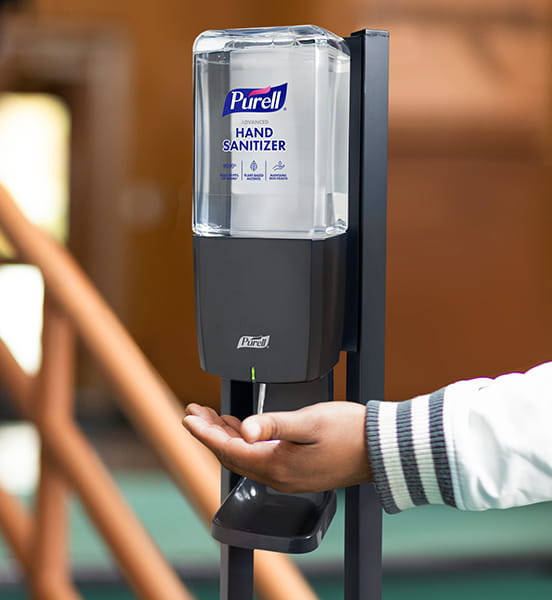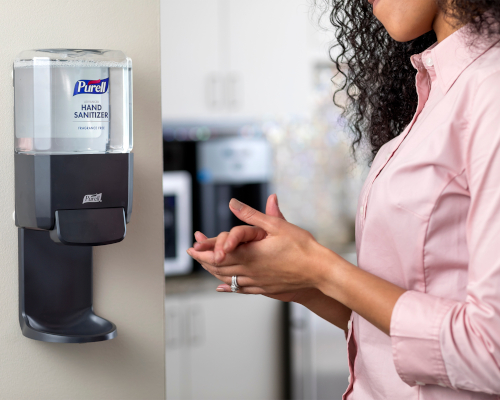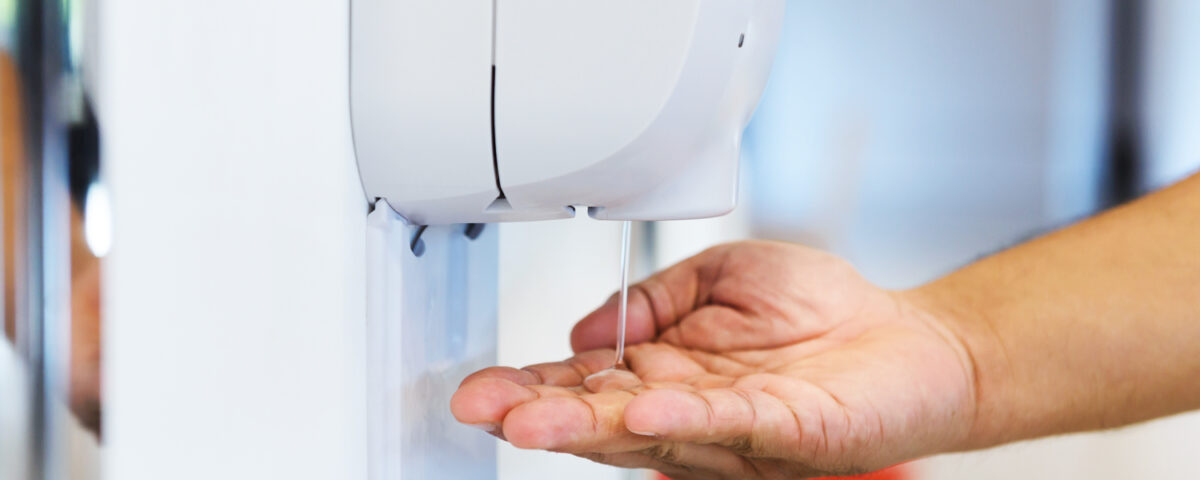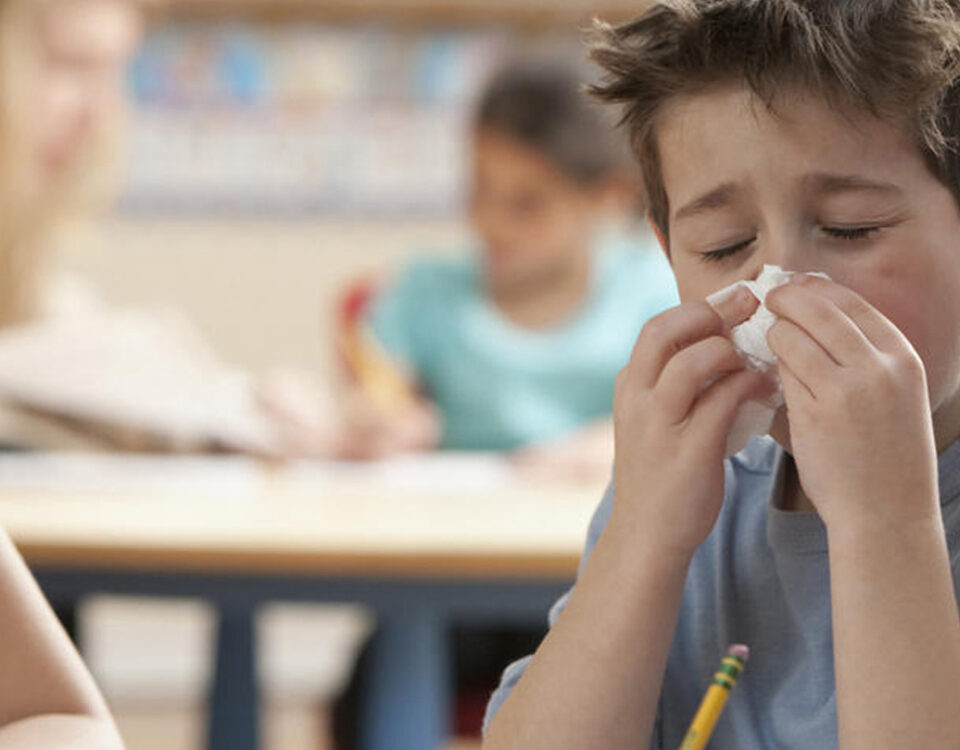Hand Sanitizer: A Simple Solution to Combat the Spread of Germs

Guernsey’s In-Stock Chair Program: Fast Delivery of Office Chairs
September 17, 2024
Cold & Flu Season: In Schools & The Office
October 10, 2024While it would be nice if we could relegate colds, flu, and other illnesses to the winter (or get rid of them altogether), the reality is, germs know no seasons and never choose to strike at the moment of our choosing. Viruses and bacteria attack year-round, which is why practicing good hygiene is a necessary 24/7 affair.
If staying healthy is top of your priority list (and why wouldn’t it be?), one of the most powerful preventative measures you can take is literally right in your hands: hand hygiene. Hand hygiene includes proper hand washing and/or using a well-formulated alcohol-based hand sanitizer.
While hand washing with soap and water is truly the safest bet for preventive measures, it’s not possible in places where sinks just aren’t readily available. Given that reality, the next best option is hand sanitizer.
Do Hand Sanitizers Work?

We spoke to scientist Jim Arbogast from GOJO Industries about hand sanitizers, and the short answer is yes, they do work – if you use the right kind and you use it correctly.
Earlier we mentioned the phrase ‘well-formulated alcohol-based hand sanitizer.’ You may be wondering what that means. Essentially, it means the following:
- It is alcohol based to improve overall antimicrobial efficacy (but does NOT contain triclosan)
- It has been formulated to be tough on germs but gentle on the skin, so it won’t strip your hands of their natural lipids or dry them out, but it WILL kill a broad spectrum of germs before evaporating from your skin
- It provides a likeable experience – meaning it doesn’t smell bad or leave your hands feeling sticky or like sandpaper.
The Journal of Occupational and Environmental Medicine conducted a peer-reviewed study that analyzed insurance claims, attendance records, and employee surveys to measure the effects of a comprehensive hand hygiene program. The study, conducted over a span of 13 months, revealed striking results: employees who participated in the hand hygiene intervention filed 24% fewer healthcare claims for illnesses that could be prevented through proper hand hygiene, compared to their counterparts in the control group. Moreover, the intervention group experienced a reduction in absenteeism rates of over 13% from the previous year.
What’s particularly noteworthy about the study is how simple it was to set up: basically, it involved providing one bottle and one canister of wipes of PURELL® hand sanitizer on employee desks and in common areas such as cafeterias, meeting rooms, and break areas, coupled with some basic hand hygiene education. That’s it.
The results showed that hand hygiene played a crucial role in curbing the spread of illness-causing germs, which not only safeguarded employee health, but also significantly enhanced productivity and bolstered business performance. By providing the right conditions, it’s abundantly clear that people are not just healthier; they are happier. And hand sanitizer has a big hand in that, pun entirely intended.
Dispelling Myths About Hand Sanitizer
There are plenty of misconceptions circulating about hand sanitizers, so we put together this infographic to nip the most common myths in the bud.

How To Use Hand Sanitizer Properly
Start by applying a dime-sized amount of hand sanitizer, enough to cover all surfaces of your hands. Rub the sanitizer into the palms of your hands, fingers, back and front of hands and thumbs. Continuing rubbing hands together until hands are dry.
If you’re using it correctly, the entire hand sanitizing process should take approximately 15 seconds.
Best Times to Sanitize Your Hands
The best times to sanitize your hands are:
- Before and after preparing food and eating
- After using the bathroom
- After sneezing or coughing
- After caring for or being around someone who is ill
- After touching any surfaces that have been touched by other hands, such as door handles, counters, elevator buttons, or handrails
Germs can survive on surfaces from a few minutes to literal months. For example, the flu virus can live for up to 24 to 48 hours on hard surfaces, while the coronavirus can live from a few hours to a few days. E. coli bacteria can survive up to 4 hours on hard surfaces, and Clostridium difficile can last for 5 months on hard surfaces. Suffice it to say, even with a rigid cleaning regimen, germs are very difficult to eradicate entirely. Which is making the practice of good personal hygiene so very important. It not only protects you; it helps to protect everyone around you.
Incidentally, this ties into the value of workplace hygiene and sanitation overall, but that’s a topic for another blog.
Make Good Hand Hygiene Easy

While sending out reminder emails and putting notes in opportune places like bathrooms and kitchens that encourage people to use hand sanitizers helps, the best way to get people to use hand sanitizer is to make it convenient for them. Keep bottles, dispensers, and/or wipes in common areas like kitchens, lounges, meeting rooms, and bathrooms, as well as at individual employee workstations and desks. The easier it is for people to practice good hand hygiene, the more likely they are to do it.
Keep in mind that skin care products that make antibacterial claims (which includes hand sanitizers) are regulated as over-the-counter drugs by the US FDA, and their efficacy wanes over time. PURELL® hand sanitizers, for example, are good for up to 36 months after their manufacture date.




